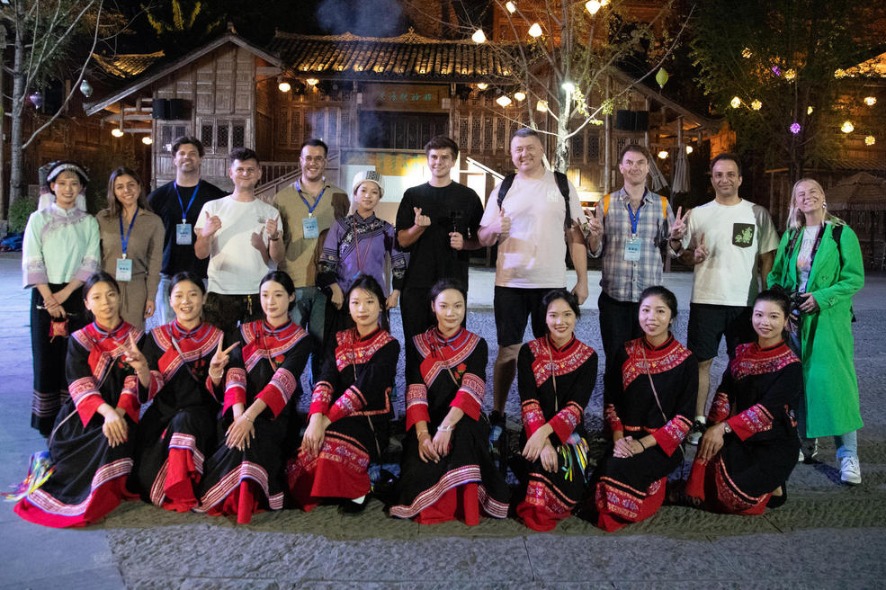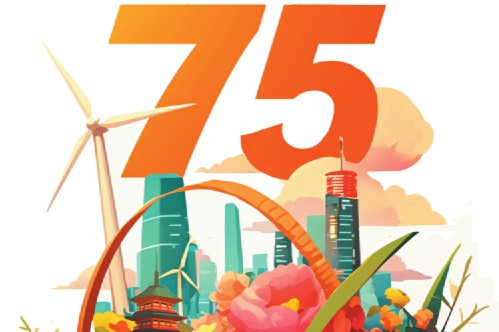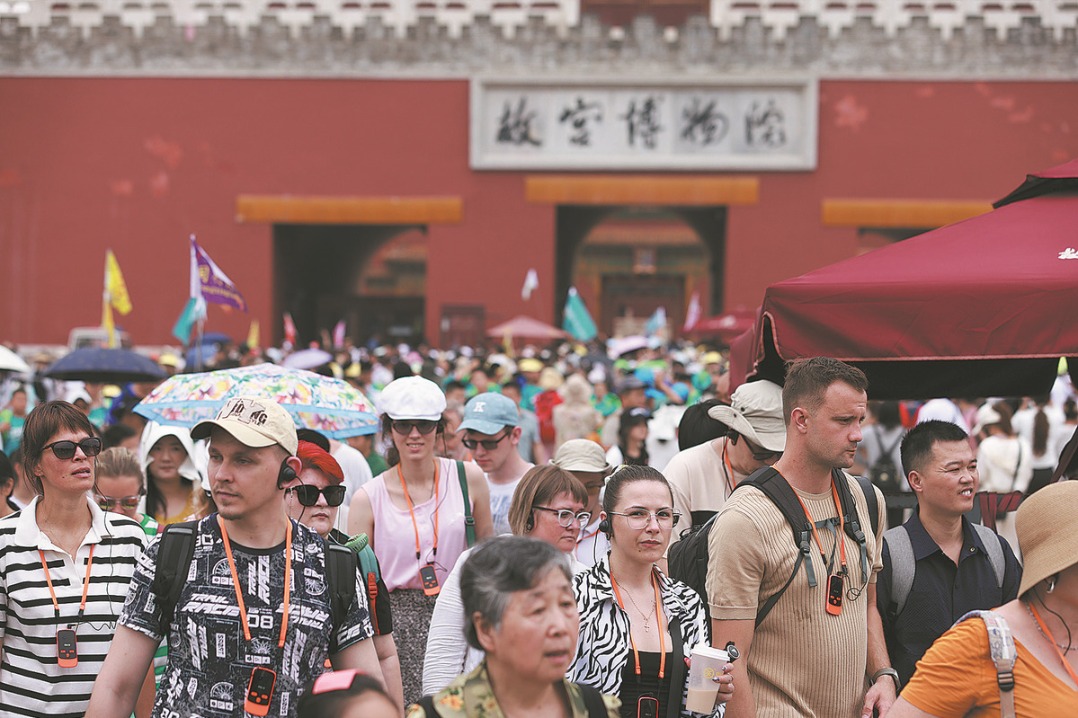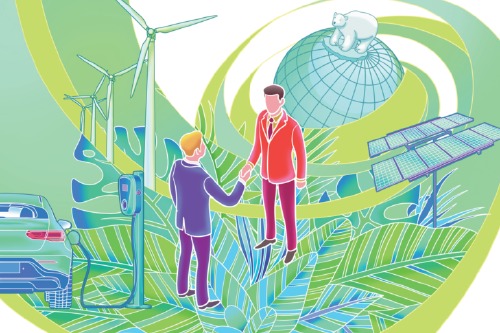Affirmative action

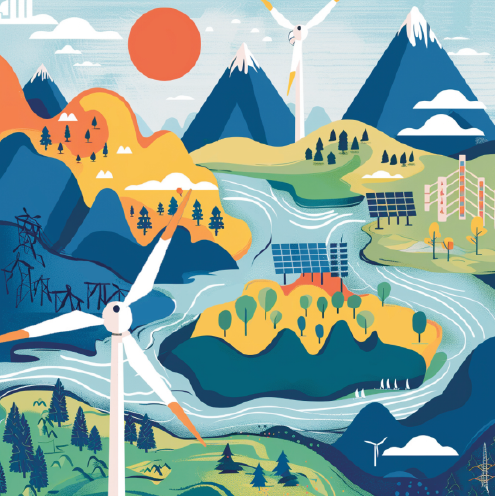
China and the EU should seize the opportunity for cooperation amid the restructuring of the EU's clean energy supply chain
Driven by the global energy transition, global clean energy investment has reached record highs in recent years, and is expected to hit $2 trillion in 2024. Consequently, the clean energy supply chain has become the focus of competition between the world's major powers. In recent years, the European Union has accelerated the restructuring of its clean energy supply chain, shifting from efficiency first to security first. The reshaping of the EU's clean energy supply chain not only poses a challenge to the development of China's clean energy-related industries, but also presents opportunities for China-EU clean energy cooperation.
Geopolitical factors are playing an increasingly important role in the reshaping of the EU's clean energy supply chain, and China's related industries will encounter more challenges in the European market.
To start with, the EU has strengthened its intervention in market access criteria for the clean energy technology market as well as technology outflows, and continuously reinforced constraints on the green standards and norms of China's clean energy industry.
The European Commission's Net-Zero Industry Act came into force on June 29. It aims to reach at least 40 percent of domestic manufacturing capacity in net-zero technologies to meet the EU's annual deployment needs by 2030. The law has strengthened the importance of geotechnology in the accomplishment of the EU's net-zero goals, which means that Chinese manufacturers entering the EU market will face more intense technological and market competition. In addition, the EU also uses ideology, particularly in human rights and labor standards as a major weapon, to exert pressure on China's clean energy industry, hindering normal green trade and investment exchanges between China and Europe.
Second, the EU has emphasized the geopolitical risks associated with its dependence on China's clean energy supply chain. It has attempted to bring in more "friendly countries" to establish a clean energy supply chain based on so-called democratic countries.
The European Commission's Critical Raw Materials Act, which came into force in May, sets out the goal of localizing the EU's critical raw materials supply chain. Additionally, the Act mandates that no more than 65 percent of any strategic raw material should be sourced from a single third country, which is targeted at China. The EU is also committed to establishing clean energy supply chains dominated by Western countries and in line with so-called democratic values, such as the Minerals Security Partnership.
Finally, the EU is actively drawing in countries that play an important role in the clean energy supply chain, strengthening the expansion of and competition for the green market, and seizing opportunities and the initiative to cooperate with African countries in various fields such as energy and minerals.
For example, the EU regards Africa as a key region for cooperation in the clean energy supply chain. Its Global Gateway strategy proposes increasing investment in clean energy projects and sustainable infrastructure in Africa and building a sustainable value chain for mineral raw materials.
Despite the competition, China and Europe, both important actors for advancing the global energy transition, have a strong need for cooperation in the clean energy supply chain. The reshaping of the EU's clean energy supply chain has provided both sides with enormous room for cooperation.
First, the accomplishment of the EU's low-cost energy transition requires China's participation.
As the EU's top supplier of photovoltaic modules, electric vehicle batteries and rare earths, China has made significant contributions to the EU's low-cost energy transition. Taking PV modules as an example, about 90 percent of the PV modules imported by major EU member states come from China. Exports of Chinese PV modules to the EU countries totaled $19.01 billion in 2023.Exports to Europe account for the vast majority of China's total exports.
Second, the green EU-Asia connectivity strategy provides a communication platform for building an inclusive and pragmatic China-Europe clean energy partnership network.
The China-Kyrgyzstan-Uzbekistan Railway, which will soon begin construction, will become the shortest overland route for delivering goods from China to Middle Eastern and European markets, shortening freight journeys by 900 kilometers and saving seven to eight days in transit time. The opening of the railway will enable more convenient transportation of clean energy-related equipment and key minerals between China and Europe. It will also maintain the sustainability of China's rail trade with the EU.
Third, Africa is rich in clean energy resources and has great potential for development. China and Europe can strengthen cooperation in Africa in distributed clean energy, green transportation and green financing, among others.
China-EU-Africa trilateral cooperation in the clean energy supply chain is the integration and elevation of the traditional North-South cooperation and South-South cooperation modes. It will enable the integration between the green Belt and Road construction and the EU's Global Gateway strategy and accelerate Africa's clean energy transformation.
In the face of both challenges and opportunities brought by the reshaping of the EU's clean energy supply chain, China should seize the opportunities in Sino-European clean energy cooperation to eliminate the negative impacts exerted by the reshaping of the EU's clean energy supply chain.
First, China should continue to actively promote dialogue with the EU.
It should make the China-EU High-Level Economic and Trade Dialogue and the China-EU High Level Dialogue on Environment and Climate institutionalized exchange and communication platforms for the two sides, and make use of its comparative advantages to promote Sino-European benign competition and coordination of standards on pivotal issues, so as to reduce green trade barriers and trade frictions.
Second, China should take the initiative in the formulation of standards and rules involved in the clean energy supply chain.
It can utilize its unique advantages to actively participate in and take the lead in developing international standards in such areas as photovoltaics, wind power and electric vehicles, and improve the level of mutual recognition.
Furthermore, China can invest in local clean energy enterprises in the EU and build factories overseas to circumvent the EU's potential restrictions on imports of clean energy products.
Third, China should strengthen cooperation with countries along the Belt and Road in the field of clean energy and expand China's green market. It should promote replicable and promotable clean energy development practices to countries along the Belt and Road. It should also align with the environmental, social and governance standards of the Belt and Road Initiative participating countries, so as to strengthen synergized green development with those countries.
Li Xinlei is a research fellow of the Research Institute of Contemporary Socialism and a professor at the School of Political Science and Public Administration at Shandong University. Yu Fengzhu is a research assistant of the Institute of Environmental Politics at Shandong University. The authors contributed this article to China Watch, a think tank powered by China Daily. The views do not necessarily reflect those of China Daily.
Contact the editor at editor@chinawatch.cn.

















